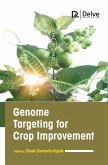Bananas are commonly grown in tropical and subtropical places around the world, where they can contribute a significant number of calories, nutritional variety, and income. Bananas play an essential part in global food security. The organic farming of bananas has more demand than fertilizers-based crops. The fruits that are grown in the organic farming-based cultivations are costly and few consumers can afford them. Bananas are assumed to be one of the world's popular cultivated fruits, and the leaves are used in a variety of dishes. Banana monoculture cultivation on a commercial scale is a relatively new practice. Fresh and processed bananas both require packaging to prevent them from mechanical damage as they move through the value chain. The majority of bananas are consumed raw, with fewer than 5% being processed. Most of the products derived from banana plants can be processed without much loss in the native nutrients. The cooking of the raw banana can release phenolic compounds that can help in human health. The subject of the book starts from providing a clear picture of organic farming of banana its disease & pest control along with processing that are used as processed foods. The book further talks about the physiology of banana, pathology of banana including desert banana, its disease symptoms, fungi, bacteria, nematodes in banana crops. In addition to this, organic production and tissue culture of banana have been discussed descriptively. Unripe banana fruit is used as a cooked vegetable, chips, and other items, whereas ripe banana fruit is mostly consumed raw. Ripe bananas can be pulped and used to make puree, which can then be used in a range of foods such as ice cream, yogurt, cake, bread, nectar, and baby food. Bananas have been subjected to a variety of treatments in order to extend their shelf life, maintain their quality, and improve their marketability. Furthermore, when selling bananas, ripening stages are critical. Ripe yellow bananas are available at most convenience stores and shops and are ready to eat. Banana production and sales have increased in recent years as a result of improved purchasing convenience and greater health awareness.
Hinweis: Dieser Artikel kann nur an eine deutsche Lieferadresse ausgeliefert werden.
Hinweis: Dieser Artikel kann nur an eine deutsche Lieferadresse ausgeliefert werden.








